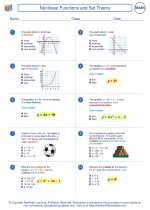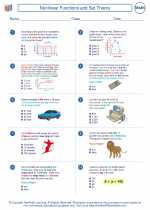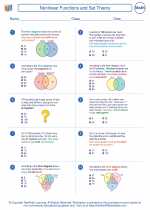Explanation of Secondary Data
Secondary data refers to the information that has been collected by someone else for a different purpose than the one at hand. This data can be gathered from various sources such as books, journals, websites, government publications, and other secondary sources. Secondary data is used in research and analysis to support or refute the primary data that has been collected by the researcher.
There are two types of secondary data:
- Internal Secondary Data: This type of data is collected within the organization or institution. It includes sales reports, customer databases, and financial records.
- External Secondary Data: This type of data is collected from sources outside the organization, such as industry reports, government publications, and research reports.
Study Guide for Secondary Data
Here are some key points to focus on when studying secondary data:
- Understand the difference between primary and secondary data.
- Learn about the sources of secondary data, such as government publications, research reports, and industry databases.
- Explore the advantages and disadvantages of using secondary data in research and analysis.
- Understand the process of collecting and analyzing secondary data.
- Learn how to critically evaluate the quality and reliability of secondary data sources.
By understanding these key points, you will be able to effectively utilize secondary data in your research and analysis.
.◂Math Worksheets and Study Guides Seventh Grade. Nonlinear Functions and Set Theory
Study Guide Nonlinear Functions and Set Theory
Nonlinear Functions and Set Theory  Worksheet/Answer key
Worksheet/Answer key Nonlinear Functions and Set Theory
Nonlinear Functions and Set Theory  Worksheet/Answer key
Worksheet/Answer key Nonlinear Functions and Set Theory
Nonlinear Functions and Set Theory  Worksheet/Answer key
Worksheet/Answer key Nonlinear Functions and Set Theory
Nonlinear Functions and Set Theory  Worksheet/Answer key
Worksheet/Answer key Nonlinear Functions and Set Theory
Nonlinear Functions and Set Theory  Worksheet/Answer key
Worksheet/Answer key Parabolas
Parabolas 

 Worksheet/Answer key
Worksheet/Answer key
 Worksheet/Answer key
Worksheet/Answer key
 Worksheet/Answer key
Worksheet/Answer key
 Worksheet/Answer key
Worksheet/Answer key
 Worksheet/Answer key
Worksheet/Answer key

The resources above cover the following skills:
Algebra (NCTM)
Represent and analyze mathematical situations and structures using algebraic symbols.
Explore relationships between symbolic expressions and graphs of lines, paying particular attention to the meaning of intercept and slope.
Analyze change in various contexts.
Use graphs to analyze the nature of changes in quantities in linear relationships.